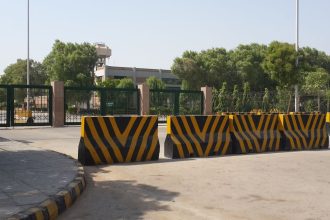More than 500 priceless artifacts have been unearthed at the Unesco World Heritage Site of Bhamala in Haripur. Some of the main discoveries were found to be damaged due to earlier illegal excavation.
The recent discoveries included terracotta artifacts, stucco sculptures, architectural elements, copper coins, iron nails, door sittings, pottery and 14 coins from the Kushan era.
Apart from natural decay, illegal excavations have resulted in widespread damage to some of the most important discoveries at the ancient Buddhist stupa. Some of the chapels on the southernmost side werefound empty, while others contained stucco sculptures of varying and unique styles.
At the moment, the site’s history can be traced back to 2,000 years, but some recent discoveries sent to the US for laboratory tests could date the site even further back in history. Excavation work has been halted till next year by officials and documentation to this effect is in process.
“The most remarkable discovery from Bhamala was the Maha Puri Nirvana (death of Buddha) statue measuring 14 metres in length. It is the largest such example [depicting the death scene] found in the Gandhara civilisation,” said K-P Director Archaeology and Museums Abdul Samad.
The director said it was made of Kanjur stone. He added its right leg and a portion of the left leg were covered in drapery, while the feet and shoulders were placed on a huge 15-metre platform. The statue was situated at the northwest end of the complex and faced the east.
The archaeologist said the upper left leg and arms were damaged and had fallen towards the east for unknown reasons, while the head of the Buddha was missing due to damage caused by illegal excavators.
Much like the sculpture of the Nirvana scene, the southern side of the newly-exposed stupa was also badly damaged by illegal excavations. Samad added the northern and eastern sides of the stupa were in better condition and provided a clearer picture of the original structure.
A total of nine chapels towards the eastern side of the stupa were exposed during recent excavations; five of these chapels were excavated. Chapel 1 and 2 on the southernmost sides were found disturbed and empty, while the remainder contained stucco sculptures of unique styles.








